18 Clothing Care Tips Straight from the TikTok Experts
Including how you should sort your clothes and when it's time to get rid of your bras
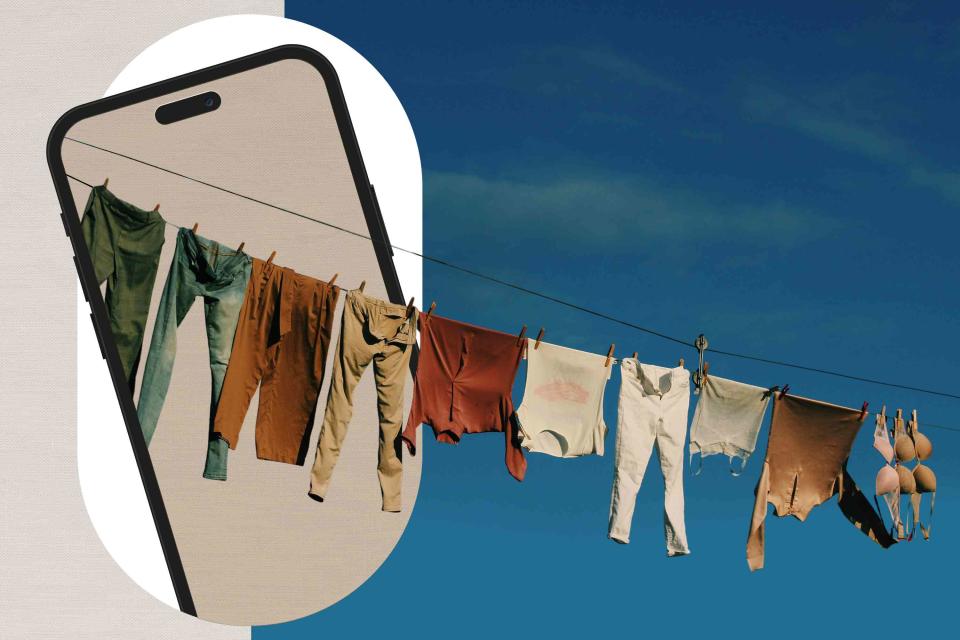
Getty/Unsplash
The beauty of TikTok is that it's good for more than just scrolling through cute cat videos while procrastinating going to sleep every night. You can actually learn a lot from the app.
If you haven't made it to the corner of TikTok where you can find household tips, don't worry, we're bringing you there. Spring is the perfect time for a closet refresh — and that means making sure all your clothes are cleaned properly, store properly and in their best condition. And that starts with knowing how to do it all.
If you don't already know how to properly launder your clothes and store them away, the magic of TikTok and its experts are here to guide you along. Ahead, find some of the best clothing care tips to kick-start spring.
Wash Towels Separately
It may not be easy to wash your towels separately if you live alone so only have a couple in rotation. But if you can swing it, cleaning expert Caroline Solomon recommends washing your towels on their own to save the rest of your clothes from getting linty. She adds that keeping them apart from your other laundry "preserves the quality of your clothes."
Cleaning expert and author of A Dirty Guide to a Clean Home Melissa Pateras breaks down exactly why that is in the above TikTok, calling towels "lint releasers" and explaining the reasons they can cause problems when washed with other items.
She further encourages separating your laundry even further when you wash, breaking it down by weight, color, wash type, etc. if you're able.
Store Purses in Dust Bags
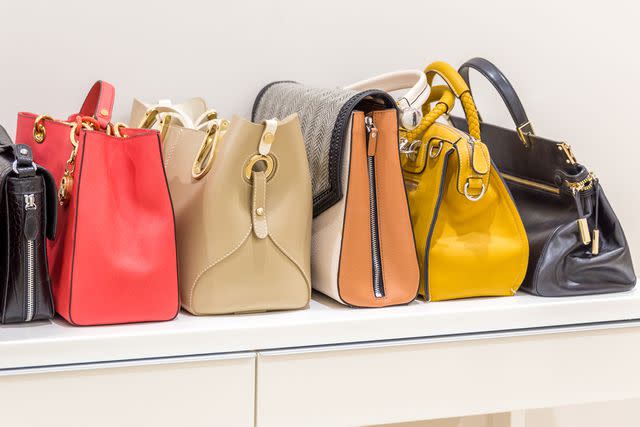
Getty
Purses in a rowPurses come with dust bags for a reason, Solomon says, and that's to prevent oxidation and dust accumulation on your bags. Both of these things can break down the materials and cause your bags to degrade — and you don't want that! If your bag came with one, use it. If it didn't, consider thrifting a few to use.
It's also a good idea to add some stuffing to your bags to help them hold their shape while they're being stored. You can use crumpled-up newspaper or paper towels to do this. You can also add little labels to your dust bags if you can't remember which bag is which, so you can easily find your bags when you're looking for them (especially if you've stored them on a high shelf in your closet).
As for what to do with the straps and handles, this can vary by bag. Chain straps and easy-to-tuck long straps can often be placed inside the bag. Short, structured handles are fine to leave as is. Others, you may have to experiment with. Some people like to hang their bags (which you can still do, even if they're in dust bags!), but if you do this, we recommend being very careful, because if the bag is too heavy, it can put too much stress on the strap or handle over time and damage it. Putting padding on the hanger is also a good idea.
Store Your Bras Properly
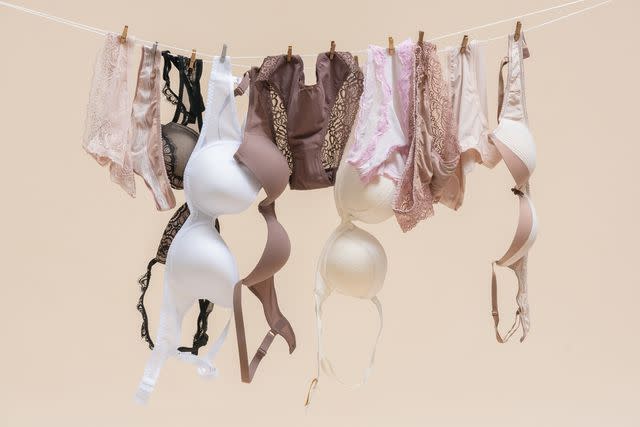
Getty
Bras and underwear hanging upBras aren't cheap, and they deserve to be treated properly after you've spent so much money on them. Phoebe Kunitomi, founder of bodywear brand okko, recommends storing them by stacking them "either vertically or flat on top of one another."
"Do not fold the bras in half, and avoid squeezing them too tightly in a bin or drawer," she says. "Together, these practices will help the molded cups maintain their shape (and avoid permanent wrinkling). Also, close the back clasp on the bra, if it has one, so it does not snag on other garments in your drawer."
You Can Hang Sweaters!

Getty
Clothes hanging in a closetThere's a good chance you've always been too scared to hang up your sweaters (us too). We've long been taught that they have to be folded to avoid stretching in the shoulders — and while stacking your sweaters in the closet may seem like the safest option, many sweaters can safely be hung, according to Pateras. Here's how.
"Sweaters, if needed, can be hung on a hanger, but you should always avoid hanging by the shoulders to avoid rabbit ears," she says. "The sweater can be folded and hung from the center bar or wrapped around the hanger. Just note that anything hung on a hanger for long periods of time can develop creases from the hangers and can accumulate dust if left in the same position untouched."
Use Rust Remover for Antiperspirant Stains
Visible white antiperspirant stains on dark shirts can be a real bummer — and they can be really difficult to get rid of. (These pesky stains differ from deodorant stains, as Pateras points out in a TikTok video, because antiperspirants often contain aluminum, which is what makes this surprising tip work.)
First, treat the shirt with dish soap and water. Then go in with undiluted rust remover, work it in with a brush and let it sit 15-30 minutes. Then throw it in the washing machine. If you don't have a washing machine, wash it by hand in the sink like you would normally hand-wash your clothes.
More Detergent Doesn't Equal More Clean

Getty
Laundry roomYou might be tempted to add more laundry detergent to your washing machine if you have really dirty clothes, but Pateras says that could do more harm than good.
"Most people think that more detergent equals more clean, but the more detergent you use, the harder it will be for the machine to rinse it out. The remaining residue left on the clothes will actually attract dirt," Pateras says.
Using too much detergent can also wreak havoc on your towels. An excess can leave them scratchy because the fibers in the towels never quite rinse clean. So if you've noticed that your own towels have become rough over time, there's a good chance you've actually over-washed them!
A Good Stain Remover Goes a Long Way
Stains happen to all of us, but all you need is one good stain remover to knock them all out. (Okay, you'll probably need a few things in your arsenal, but having a powerful one will go a long way.)
With a product like OxiClean Max Force, you can spray the stain when it happens and throw it in your laundry basket to wash later. You can let it sit for anywhere from five minutes to seven days. That's a game-changer for busy people who don't have the luxury of doing laundry right away.
Use a Flat Iron for a Quick Fix
If you've got a fabric belt that's wrinkled from being hung for an extended period of time, iron it out quickly and easily with Melissa Maker of @cleanmyspace's tip of using a flat iron.
The usual caveats apply: Be sure you're using an appropriate heat setting and that your flat iron is clean of any hair products, and don't iron any fabric belts with a flat iron that you wouldn't iron with a regular iron.
(Clean flat irons can also be a great quick fix for a wrinkled hem or shirt placket — perfect for when you catch a glimpse of a wrinkle just as you're heading out the door and don't have time to take everything off again.)
Your Dryer Can Help Remove Pet Hair

Getty
Laundry roomIf you've washed your clothes repeatedly and still feel that evidence of your pets is clinging to the fabric, Pateras recommends putting your clothes in the dryer first to loosen the pet hair up. If the ideal scenario (lint-rolling all the pet hair off before laundering your clothes) isn't feasible because you're in a hurry, throw your clothes in to tumble dry to remove the pet hair, then do your regular wash cycle.
Anything Can Be Washed Cold
Do you actually have to abide by the temperature recommendations on the clothing care tags? Maker says that you actually can ignore that and set everything to tap temperature.
She points out that the care tag on your clothes (the ones that say, "wash in hot" or "wash in warm") are what the materials have been "torture-tested" at. That means those are the highest temperatures of water those materials can withstand — but every washable material can tolerate cold water. And newer washers are so efficient that hot water isn't needed for cleanliness, apart from the sanitize setting.
Not only that, Solomon notes, washing everything in cold is a "great way to save the environment and save on your electricity bill."
Pateras further adds that hot water is actually the "leading cause of fading colors in fabrics."
Optimize Your Clothing Storage

Getty
Clothes in a closetSo you've accumulated your capsule wardrobe, but how do you keep it in great shape, especially if you have to switch clothes out for the season?
"When you’re storing clothes like sweaters for the off-season, store them in breathable fabrics like linen or canvas bags to preserve them and prevent mold and mildew from forming," Pateras shares. "Also avoid storing clothing in those dreaded dry cleaning bags! These can trap humidity and can cause yellowing over time."
Pateras adds that moths are attracted to dirty clothes, so make sure everything is clean before stashing it away. Plus, "clothes should be stored out of direct sunlight to avoid fading and bleaching."
Be Delicate with Delicates
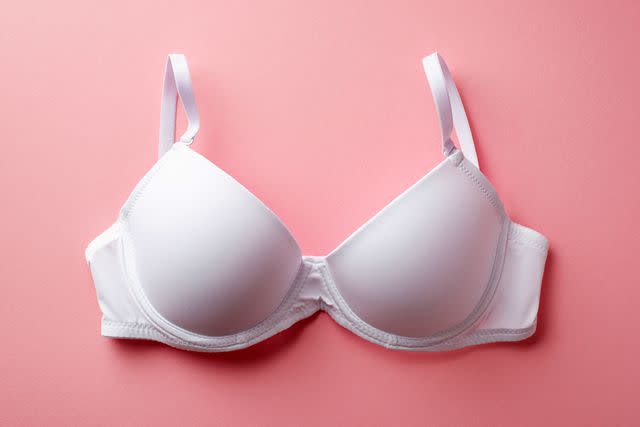
Getty
white braDelicates are called delicates for a reason and Kunitomi wants you to treat them as such. She recommends hand-washing your bras always, but if you insist on putting them in the washing machine, use a mesh bag (and the delicates cycle!).
"This tool protects the garments from snagging or pulling during the cycle. My pro tip is to fill up the wash bag only about halfway to give enough room for the water to move around and cleanse the garments," she says.
To dry your bras, hang them up or lay them flat — don't put them in the dryer! It can break down the cups and damage the hooks.
As for your underwear, she says those can go in the machines — it's not as important to be as delicate with them! Just wash and dry them on the cool settings.
Be Careful with Leather
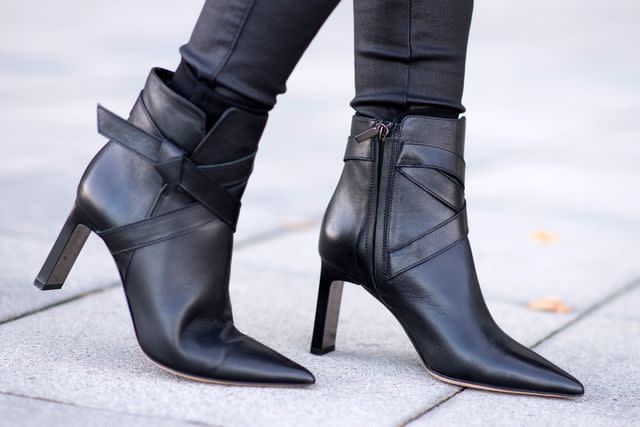
Getty
Boots"All leather items should be conditioned [with leather conditioner] at least once a year or before storing," Pateras advises. "Most leather manufacturers recommend using only water and a soft cloth to clean. Never use chemicals on leather unless specified by the manufacturer."
Use Vinegar as Fabric Softener

Getty
Laundry roomIf you want a natural fabric softener, try vinegar. No, really! Solomon loves it as an alternative. "Vinegar can be polarizing, but if you can get past the initial strong smell, it makes a great fabric softener for your clothes, sheets and towels," Solomon says. "Add 1/4 cup to the fabric softener dispenser and it will restore clothes to their initial softness."
And don't worry — your clothes won't come out smelling like vinegar. The smell dissipates as it does its job!
Store Purses Inside Purses
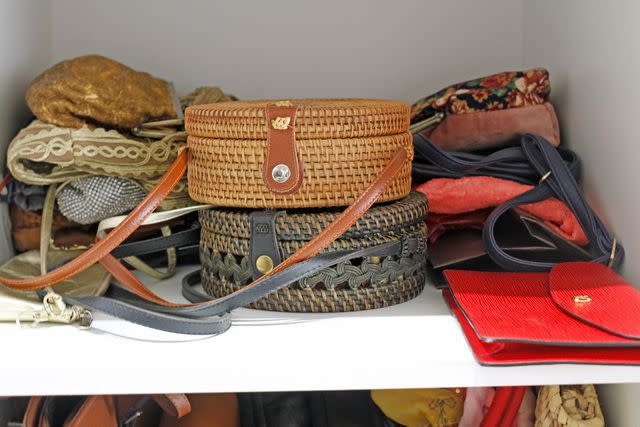
Getty
Purses stacked in a closetIf you're short on space, Pateras suggests storing purses inside of purses. This can especially be helpful in holding the shape of the bag so they don't collapse into themselves and crease. She also recommends rotating them occasionally to further prevent creasing.
You might be wondering how to remember where you've stored your bags when they're tucked away like this. Consider creating a "treasure map" for yourself and taping it to the side of the shelf for quick reference.
Most Sneakers Are Machine Washable
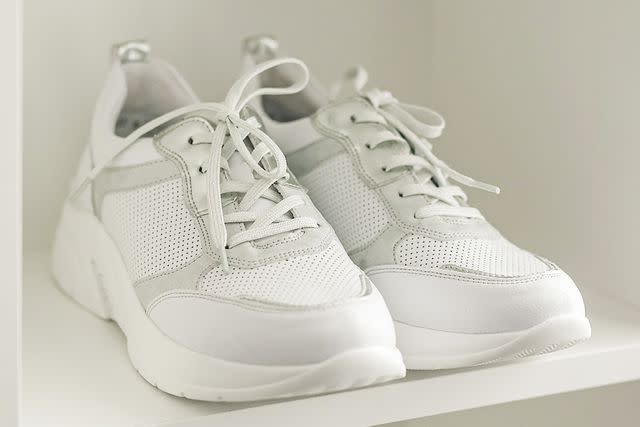
Getty
White sneakersFor small spots on sneakers, dish soap and warm water or a Magic Eraser should do the trick. But if your tennies are looking worse for the wear, many of your sneakers can go right in the washing machine, Pateras says. (Use your best judgment, of course: As long as your sneakers aren't super fancy shoes that you're extremely afraid of damaging — and they aren't made of genuine leather or suede — they're generally fine for to machine-wash.)
Wash them with warm water (at max — too hot and you might damage any glue in the shoe) on a gentle cycle with a couple of towels so they're not being thrown around in the machine. You may also want to take the laces out before washing. To dry the shoes, stuff them with some newspaper so they'll hold their shape and leave them to air-dry.
If your sneakers are a designer pair that you splashed out on, that's another story. For those, you may want to consult your favorite shoe guy.
Know When to Ditch Your Bras and Undies
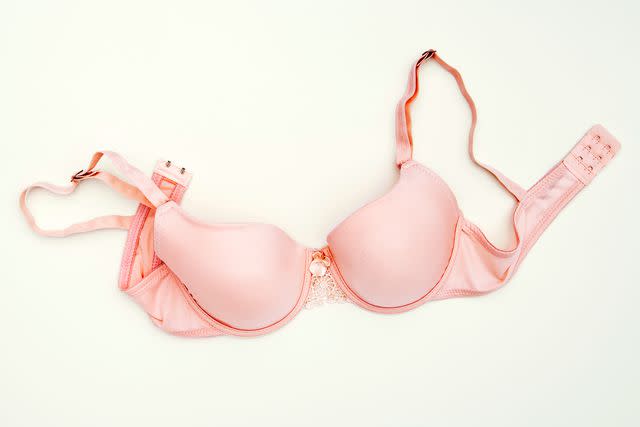
Getty
pink braNothing lasts forever — and that includes your bras and undies. Though there's no hard and fast rule about when you should toss your bras and underwear (that comes down to how often you wear them and launder them), Kunitomi says a good rule of thumb is every six months for underwear and every year for bras.
"You also should replace delicates when physical signs of wear impair the item’s functionality," she adds. "Holes, tears or overstretched fabric are clear-cut signs that it’s time for a replacement."
okko even offers a Take Back Bag recycling program to help you recycle your underwear and make room for new ones when the time comes.
You Can Bring Back White Clothes Without Bleach
Some of us are scared of bleach, okay? But that means when white clothes get dingy we need an alternative. Solomon throws her whites in to soak with OxiClean's White Revive for six hours and they're like new.
For more People news, make sure to sign up for our newsletter!
Read the original article on People.


